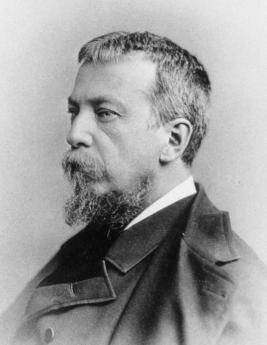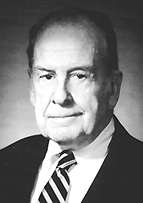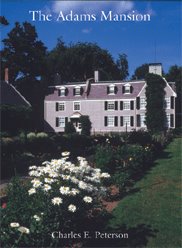Related Topics
Historical Preservation
The 20% federal tax credit for historic preservation is said to have been the special pet of Senator Lugar of Indiana. Much of the recent transformation of Philadelphia's downtown is attributed to this incentive.
Particular Sights to See:Center City
Taxi drivers tell tourists that Center City is a "shining city on a hill". During the Industrial Era, the city almost urbanized out to the county line, and then retreated. Right now, the urban center is surrounded by a semi-deserted ring of former factories.
Tourist Walk in Olde Philadelphia
Colonial Philadelphia can be seen in a hard day's walk, if you stick to the center of town.
Shrine of Historical Restoration

|
| Silas Weir Mitchell |
There are only a half-dozen wooden houses in Philadelphia, a consequence of laws passed after a disastrous colonial firestorm. Silas Weir Mitchell wrote a novel called "The Red City", referring to all the red brick houses in Philadelphia, particularly those along the bank of the Delaware River, greeting visitors arriving by sail. People who know about these things say only Dublin, Ireland has more redbrick colonial and Federalist houses still standing. You have to care about these things to preserve them; recently I heard that New Brunswick in New Jersey had a very large patch of Eighteenth Century and Federalist houses still standing fifty years ago. No one seemed to care, so they crumbled.

|
| Charles Peterson |
But Charlie Peterson cared, and Judge Edwin O. Lewis cared, too. Peterson and Lewis are now gone, but these two were the idea men behind the historical restoration of Philadelphia, for which Mayor Dilworth and Senator Joe Clark generally get most credit. The Edwin O. Lewis fountain was recently torn down to make room for a gigantic visitors center, sic transit Gloria Mundi, but he alone had the force of personality, wit, imagination and drive to make Peterson's vision come to pass.

|
| The Adams Mansion |
You are expected to be self-effacing if you work for the Park Service, but Charlie had a way of winning arguments and bringing people around to his visions. He thinks big. Back in the days when the Park Service was strictly a management team for the National Parks in the West, Charlie persuaded the service that if they developed some parks in the Eastern part of the country, there might be more congressmen willing to vote funds for their projects. And that, in essence, was the driving slogan of the restoration of Williamsburg, Virginia, and the Skyline Drive. Lots of very rich people joined into these celebrations of the past, but it was Charlie who gave them the courage to hold their cultural opinions. And that was particularly true of the midwesterners with French names living in Midwestern states with French names, mostly unaware until he told them so, that it was the French coming down from Canada that opened up that region long before Lewis and Clark set out.
Charlie had an interesting time making the Adams Farmhouse in Quincy Mass . into a part of the national heritage; it's now the Adams Mansion. But it is Society Hill of Philadelphia that collectively got up off its unimaginative back, meanwhile becoming a national monument, and a silent monument to Charlie Peterson. In the Quaker view, the worship of buildings is idolatry. If you go to the right place and knock on the right door, you will find that Charlie had the imagination to take all that junk out of the dumpster, work out the provenance, label, and display exhibits of the architectural history of the area, starting a whole industry of house restorers who now have a template against which to match their un-provenanced dumpster relics. Who but Charlie would have held cocktail receptions to look at the salvaged crockery found in old Philadelphia privies, and even though thoroughly washed up, had the combination of quiet wit and brazenness to make the events a rollicking success. The Architectural Fragments Museum is something you are sure to talk about if you know enough to visit it and providing they will let you in...
No doubt the museum of shutters, nails, and doorknobs had its origin in his mind as a result of creating HABS, the Historic American Building Survey, in Washington thirty years earlier. The first and largest of its kind, this collection of photographs and measured drawings of practically every building in America with historical significance was started by him in 1933 with WPA money and unemployed architectural talent in the great economic depression of that time. It's worth a visit if they will let you in, which is not guaranteed, either. Put that name down Charles E. Peterson, the father of American architectural preservation and restoration.
Originally published: Monday, June 26, 2006; most-recently modified: Friday, May 24, 2019